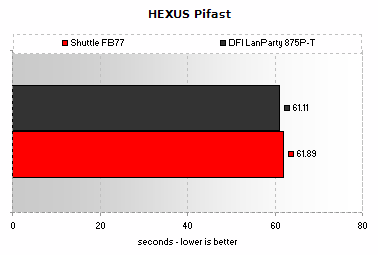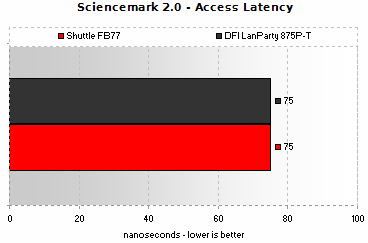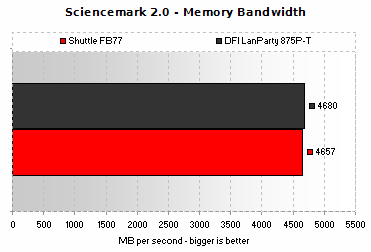Memory Tests
Memory tests let us determine whether or not the memory subsystem of the mainboard, CPU or complete system on test is working correctly and effectively. We use our own Pifast benchmark in conjunction with Sciencemark 2.0 to determine if that's the case.HEXUS Pifast

Both systems return figures in the correct range for the CPU, core logic and memory combination, the DFI slightly the faster of the pair, but by a slender margin attributable in large part to statistical error.
ScienceMark 2.0 - Access Latency
ScienceMark lets us see representation of two of the metrics that make up a large part of memory performance; access latency, where the CPU is forced to fetch data from installed system memory, and memory bandwidth, which determines how much data the CPU can pull in any given time during that access. Access latency is first.
The Canterwood memory controller puts in identical figures on both mainboards, the FB77 that powers the SB77G5 XPC not giving anything up to the DFI.
ScienceMark 2.0 - Memory Bandwith
The bandwidth test is a read test, the memory controller feeding the processor with data that's read from memory, not written.
Both systems share identical real-world bandwidth figures, Canterwood's memory controller around 75% efficient, as expected. The DFI is slightly ahead in absolute terms.









